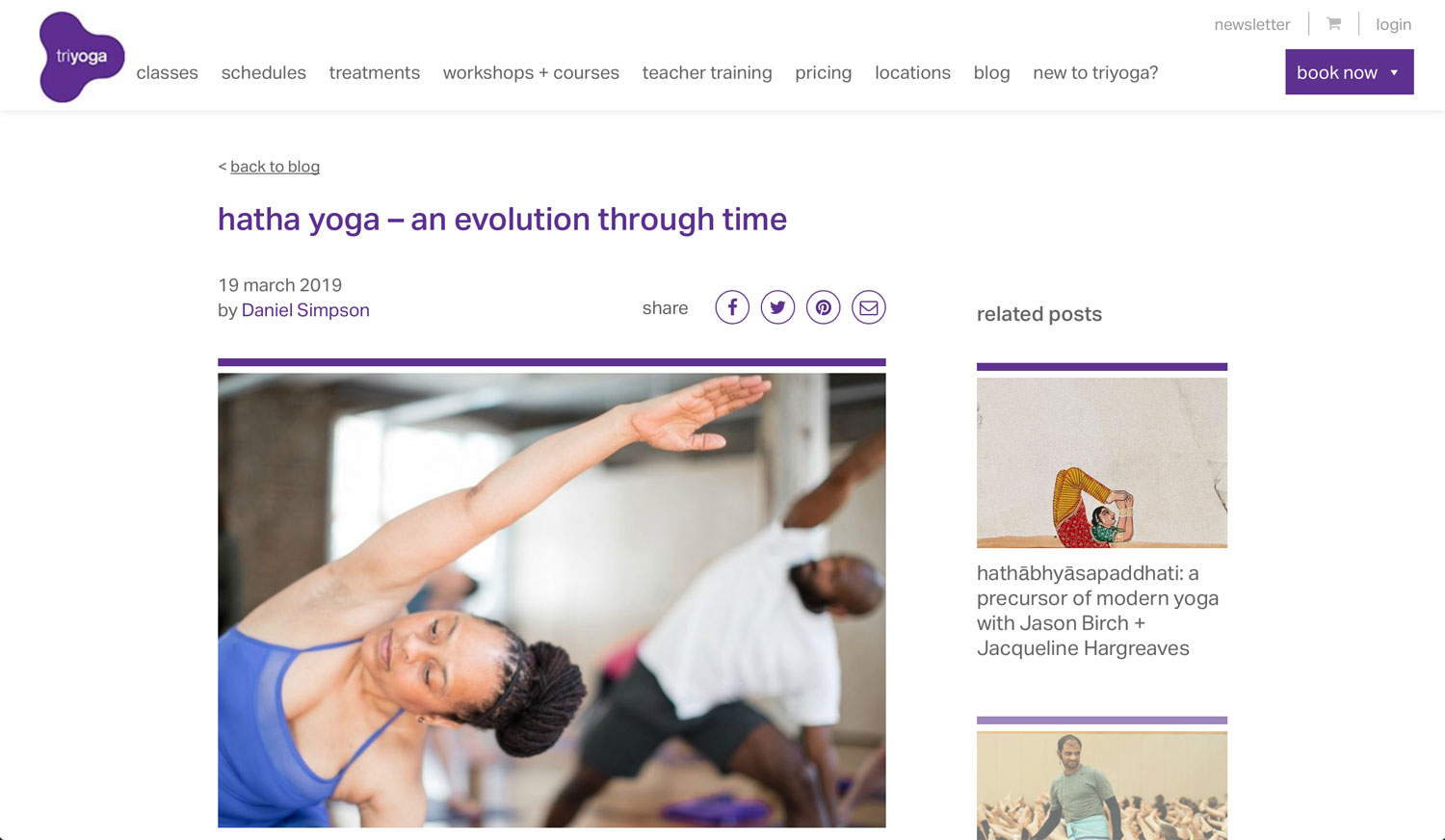The Meaning of Hatha
As posted on triyoga’s blog
Hatha yoga – an evolution through time
By Daniel Simpson
What exactly is hatha? In modern yoga usage, it often refers to a slow approach – perhaps in contrast to flow – but originally it covered all aspects of physical practice, from breathing techniques to arm balances.
In Sanskrit, the traditional language of yogic texts, the word hatha means “force”. It is therefore a “forceful” form of yoga, whose dynamic techniques have powerful effects. Another meaning of hatha is “obstinacy”, which suggests a need for strength of will.
The first reference to hatha as a system of yoga is in the thirteenth-century Dattatreya Yoga Shastra (the teachings by the sage Dattatreya). Some of its methods are adapted from austerities used by ascetics, whose extremes of self-discipline were described by the Buddha 2,500 years ago.
Ascetic versions of postural yoga included standing on one leg for years at a time or holding an arm above one’s head until it withered. Detaching from bodily discomfort, practitioners generated heat through intense exertion, which was said to grant them mystic powers. Most other early forms of yoga involved sitting still.
In an important shift, medieval texts on hatha yoga taught non-seated postures such as arm balances, which could not have been held for extended periods. They helped to limber up the body before cleansing subtle channels used in breath-control.
The other main hatha techniques are known as mudras, or physical “seals” that help manipulate energy in these channels. The most familiar today are the three “locks,” or bandhas: one at the root of the spine, one in the abdomen and one in the throat.
A quarter of the best-known text on hatha, the fifteenth-century Hatha Pradipika, is devoted to mudras. Their general aim is to move the breath and other subtle forces up the central spinal channel. As in earlier yoga, the goal is a state beyond thought, but hatha offers energetic ways of dissolving the mind.
Many verses in the Hatha Pradipika come from earlier texts, such as the Dattatreya Yoga Shastra. They also borrow Tantric ideas about balancing opposites, especially in relation to the breath. Mudras seal the torso, reversing the upward flow of prana and descent of apana, so they meet in the abdomen, forcing the central channel open.
Another union of energies occurs in two channels that lead to the nostrils. The left is cooling and linked to the moon, while the right is solar. In another early text, the Yoga Bija: “the sun is denoted by the syllable ha and the moon by tha. Because of the union of the sun and moon it is called hatha yoga.”
In his upcoming workshop, Daniel will guide students through a selection of early texts, teach traditional techniques and share how to apply them in practice. Students will develop an embodied understanding of hatha philosophy and history.
